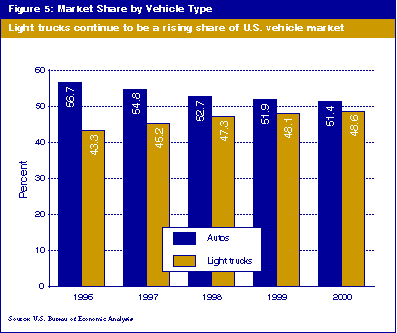Auto Sales in Recovery
In 2000, sales of automobiles and light trucks in the United States exceeded 17 million units (see Figure 1). This once unimagined level might be reached again in 2001, if lower interest rates and higher consumer expectations take hold for the rest of the year. Despite much talk to the contrary, auto and light truck sales in 2001 have been running at near-record rates, not far below last year's sales explosion.
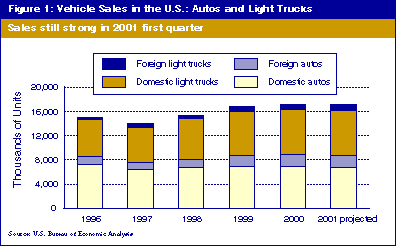
Through the first quarter of 2001, the sales rate has been 17.1 million units (seasonally adjusted at annual rates). This is down slightly from last year's 18.2 million pace, but 2001 is well ahead of the 16.2 million rate in the first quarter of 1999.
What has been the "problem" in the auto market? It was a decline in sales that bottomed out in December 2000 (see Figure 2). Domestic light trucks faltered, declining by 13% from December 1999, to their lowest level since September 1998. Domestic autos also weakened in December 2000, falling 19% from year-earlier levels. But both have recovered through March 2001.
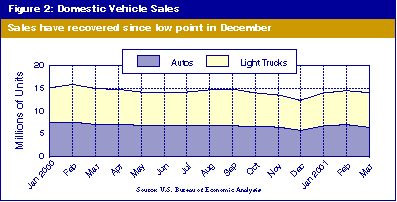
Foreign units, however, did not show any similar decline in sales (see Figure 3).
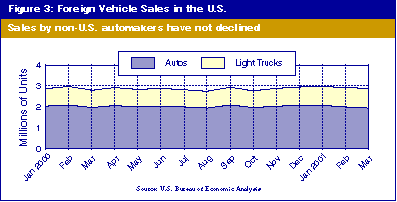
Foreign units (those built outside North America) have been increasing slowly as part of the U.S. market (see Figure 4). That growth has been most evident in foreign light trucks, which grew by 95% in sales, while autos advanced by 58% in the past five years. In comparison, domestic light trucks grew by 24% and domestic autos declined by 6% in unit volume from 1996 to 2000.
"Domestic" is defined by the industry as vehicles assembled in the United States, Canada or Mexico. The light trucks built by Toyota in Princeton, Ind., are domestic vehicles.
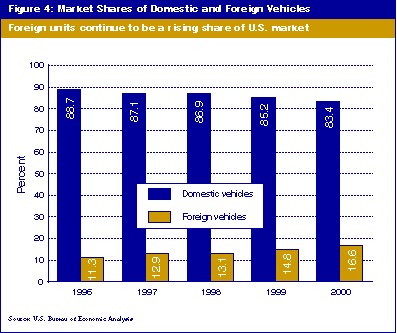
The growth of light trucks as part of the market for motor vehicles has been impressive (see Figure 5). SUVs, mini-vans and small pickup trucks moved from 43% to 49% of the market between 1996 and 2000. Thus far in 2001, light trucks continue to increase market share and could top autos by the close of 2002, if not sooner.
